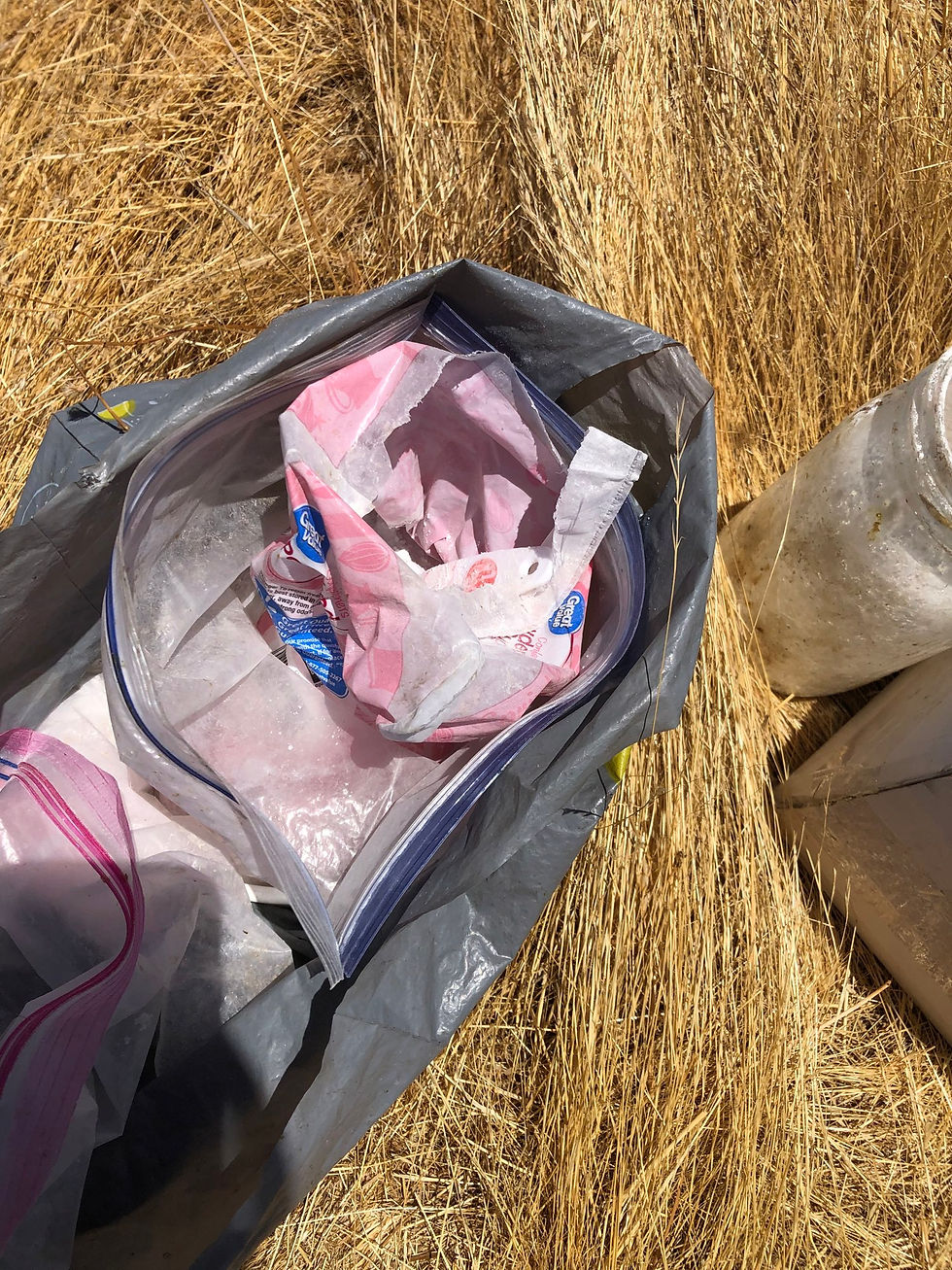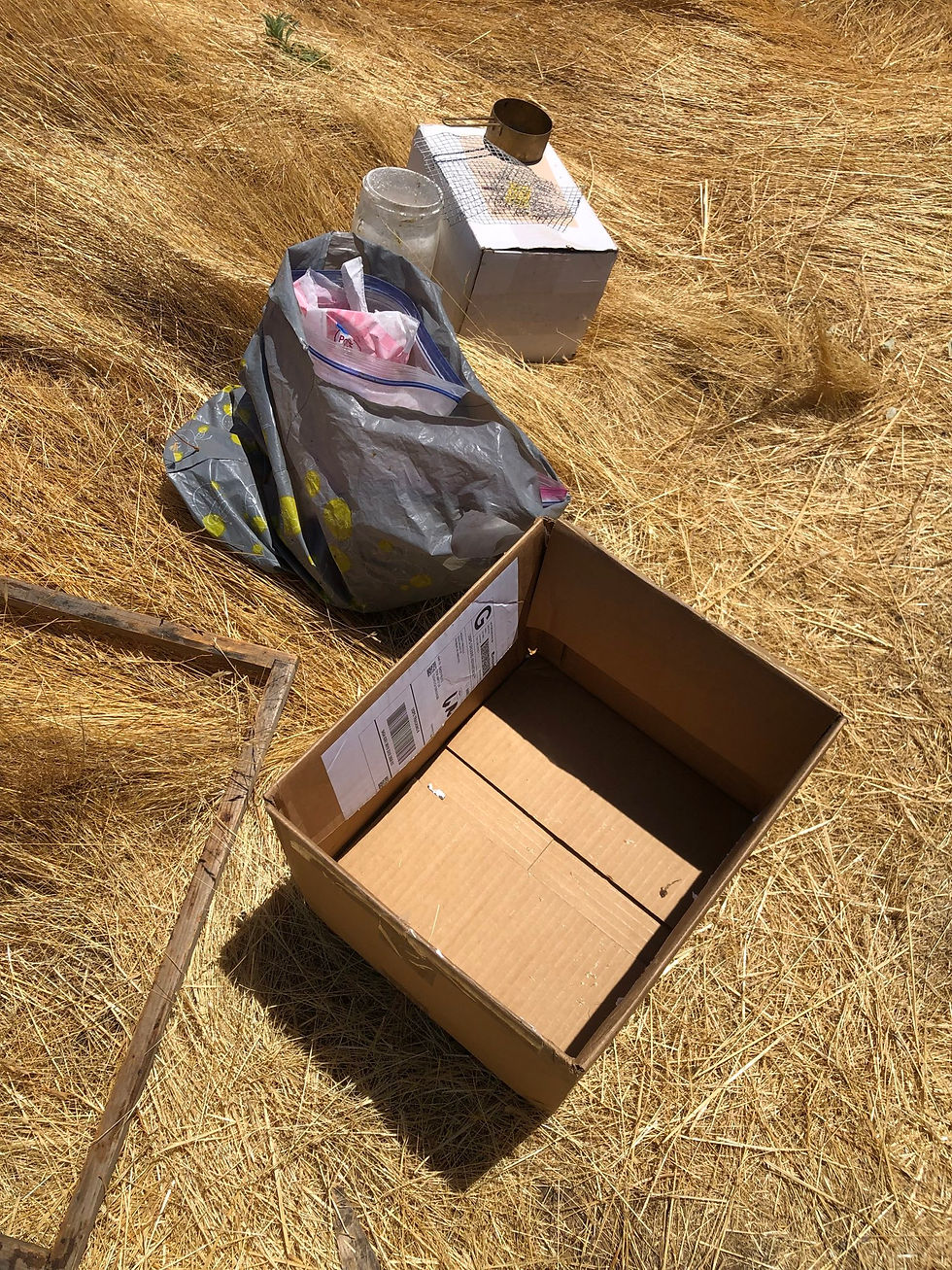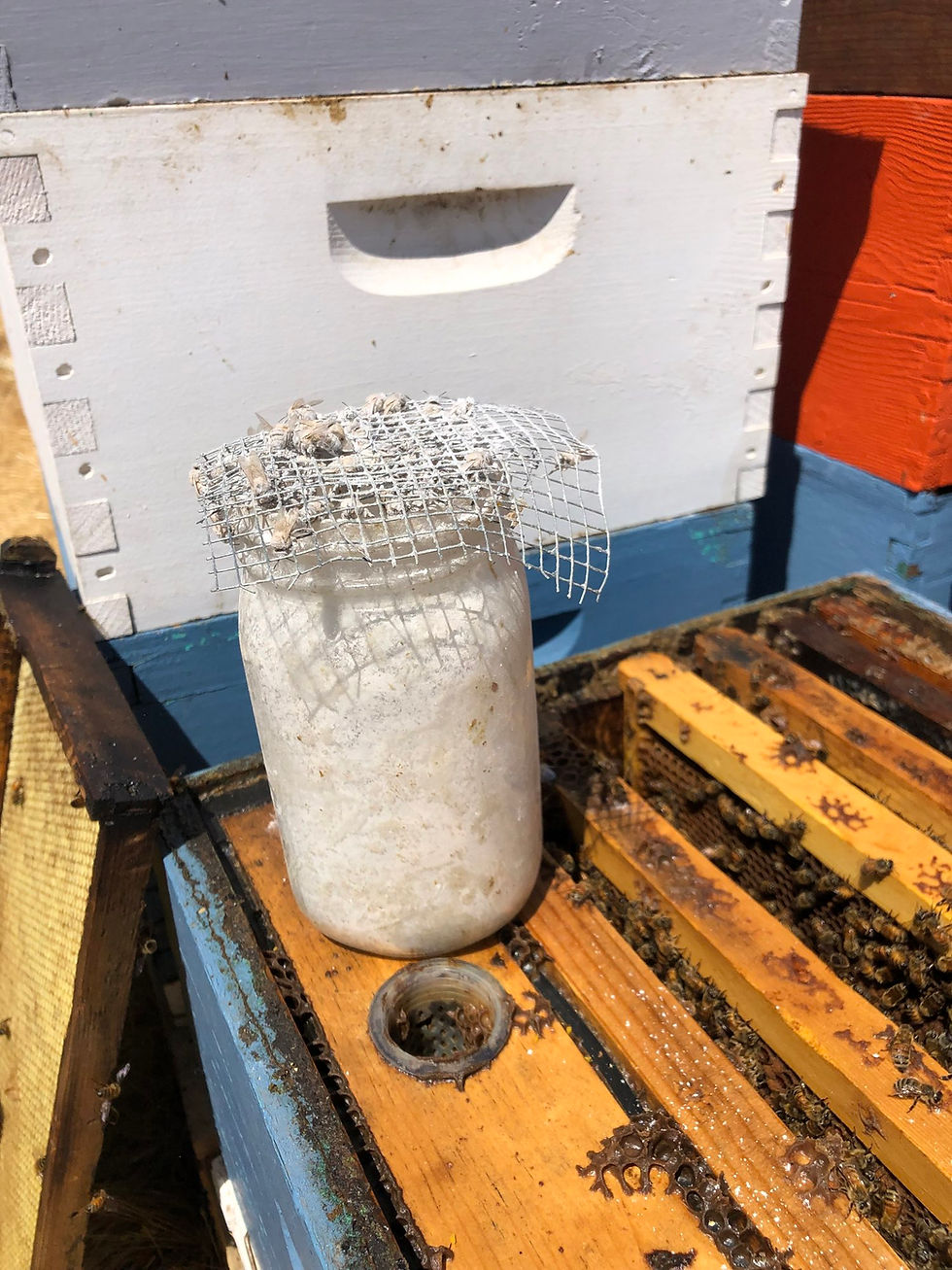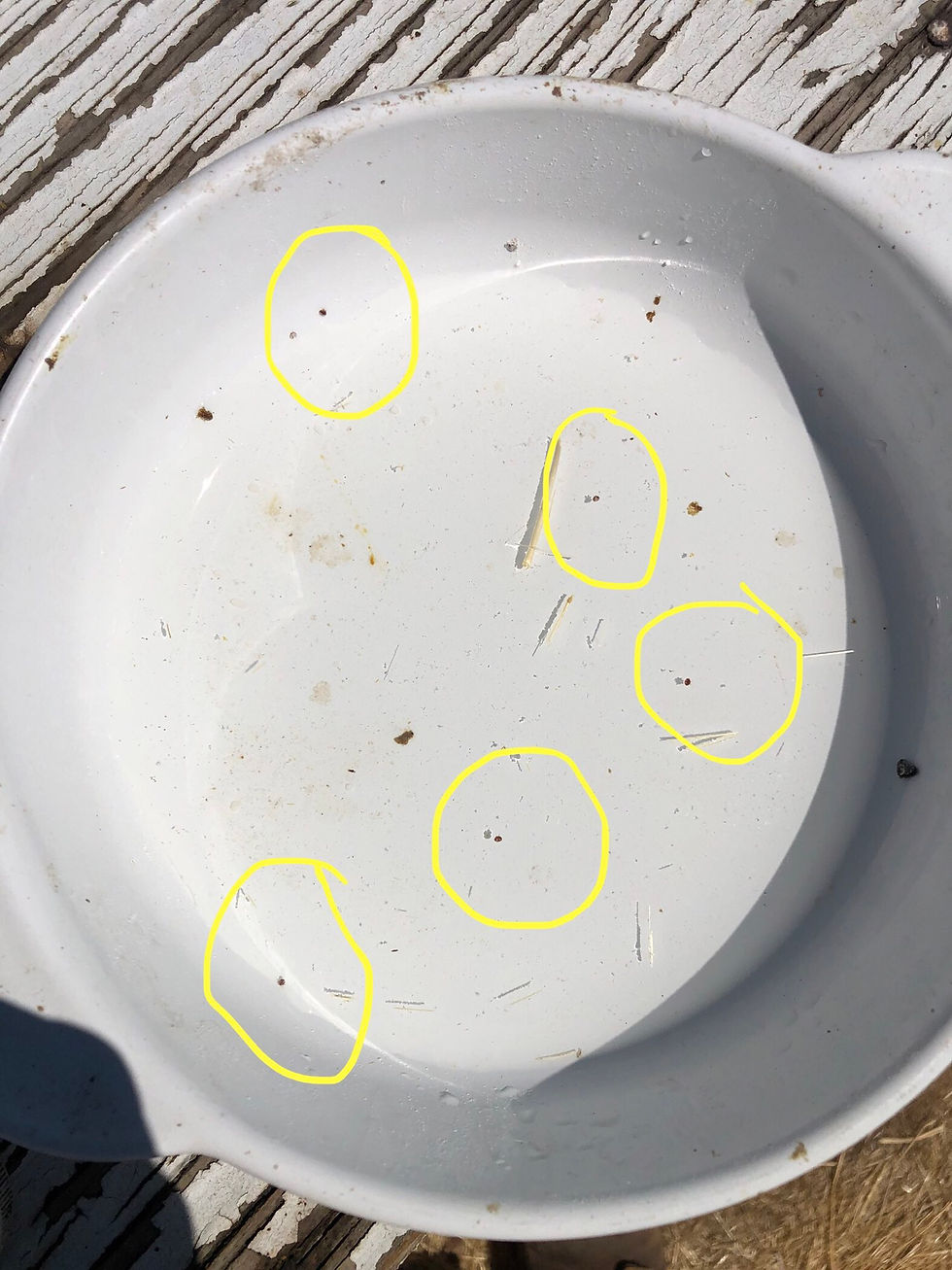Summer Bee Keeping Activities Part 3 - Checking for Mites
- Kristy Klitz

- Aug 7
- 3 min read
One of the biggest threats to bees in our area are Varroa Mites or the "Varroa destructor" (quite a name huh!). Summer is the time to keep a close tab on how many mites are in our hives.
This pest is an external parasitic mite that attacks and feeds on honey bees and is one of the most damaging honey bee pests in the world. A significant mite infestation can lead to the collapse of a honey bee colony.
There are a few different ways to check for mites in a bee hive. The method we like to use is called the "Powdered Sugar Roll", where you take a half cup sample of bees (300 bees) from a hive and cover them with a healthy dose of powdered sugar. I will explain the process...


The first step is to pull a "frame" of capped brood (baby bees) from one of our bee hives. It's important to take the half cup sample from a frame with capped brood, because mites tend to hang around the brood the most. They actually attach themselves to the brood before the cells are capped by the bees. So the bees on these frames will have a majority of the mites in the hive, giving you a good sample when testing how many mites are in a hive.



After pulling the frame of bees, the next step is to shake the bees into the cardboard box. From there it makes it much easier to scoop a half cup of bees, which gives us a sample of about 300 bees. Next, we pour the sample of bees into the mason jar and sprinkle in about a table spoon of powered sugar into the mason jar with the screen on top. And then shake the mason jar for about one minute. It’s called a “powdered sugar roll” because the shaken is more of a gentle rolling, like if you were mixing a drink, so that the powdered sugar evenly coats all the bees.

The benefit of this method is that is doesn’t kill any of the bees. Once covered in powdered sugar, the bees will quickly begin to groom each other of the powdered sugar, which in effect causes them to also pick the mites off of each other. (The mites attach to the backs of the bees almost like a tick does.) The last step is to then turn the mason jar upside down with the screen still on and gently shake it over a white bowl so that the mites fall into the bowl with the bees staying in the jar.


As shown in the picture above, we then count how many mites are in the white bowl. Sometimes it helps pouring a little water in the bowl to see the mites as they float to the surface. Under 2% mites in a sample of 300 bees is generally considered a low mite count. Anything in the 3-5% or more may mean something needs to be done, such as treating the hive with an organic or synthetic mite treatment.
Once the sample is finished, we simply pour the bees from the mason jar back into their hive, where they will continue to groom off the rest of the powdered sugar and go back to being happy bees!
Blessings,
Jeff





Comments